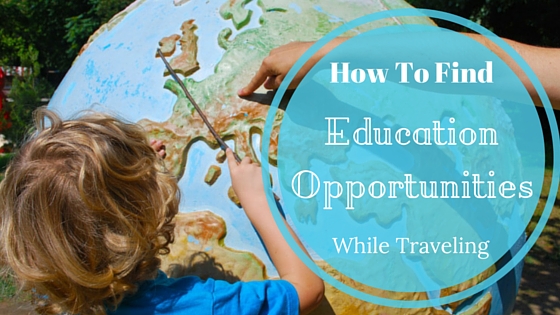
Do you know Parisian school children take boring old school field trips to the Eiffel Tower? Think about that. One of the world’s most visited tourist destinations is routinely scheduled into the French grade school calendar. I discovered that while searching for a geography lesson to teach my own children. Right at the top of the Eiffel Tower tourism page is a link for educators to prepare for their trips there. It got me thinking-what easy options are available to help turn an ordinary vacation into one with an extra little bit of learning? Turns out, just about everywhere!
Most everyone is aware of the National Park Service Junior Ranger program, but if not, it is one of the easiest ways to to get kids involved in the history, science, or culture of an area they are visiting. Requirements can include completing workbook pages, participating in park activities, and interviewing a park ranger. Books are available at the visitor centers, and are returned when completed so kids can repeat the Junior Ranger Oath and receive their Junior Ranger badges. In similar fashion, Junior Ranger programs are becoming more popular in State Park destinations, as well. For some pre-vacation learning, kids can also participate in an online junior ranger program called Web Ranger.
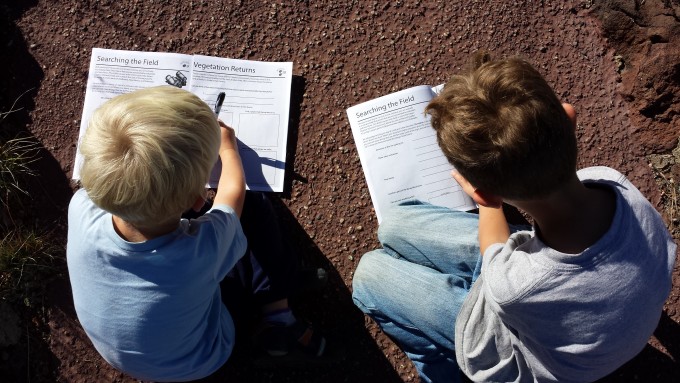
In addition to Junior Ranger programs, many parks also have an activity backpack you can check out containing a variety of scientific tools to help kids study and record what is happening around them. My children’s favorites have included bug catchers and nets, a bird call whistle, binoculars, and magnifying glasses. We usually check out one backpack for the family and let the kids take turns being in charge of each item inside. They take their observation responsibilities very seriously and always have great information to report back to the ranger on what was happening in the park that day.
Wondering how to start looking for educational opportunities that aren’t as well advertised as these? I’ve gathered information from several popular vacation locations to help get you started…
The Eiffel Tower
This is the webpage I mentioned above that opened my eyes in a whole new way to learning while on vacation. The Eiffel Tower itself has an educational display area on the first floor and the Children’s Tower link includes a downloadable booklet to use while walking through it. But to dig deeper, this page for teachers includes great lesson material and exercises for any part of the Eiffel Tower that your kids will think is interesting. The lessons are in a combination of English and French, but it will be easy enough to choose the parts you are able to read. Eiffel Tower Education Page
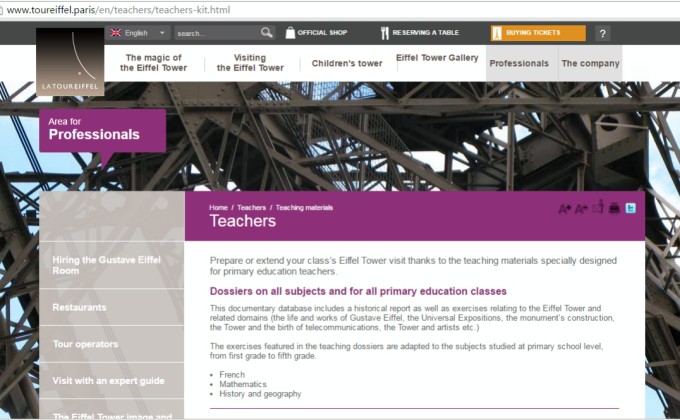
Walt Disney World and Disneyland
As one would expect, the Disney properties present educational opportunities in grand style. Offered through Disney Youth Programs, individuals can enroll in classes covering a number of subjects. Whether your child is interested in animation, marine life, the history of the American West, or Zoology there is probably a behind-the-scenes lesson waiting for them. Most of the classes range from 2-3 hours and daily theme park admission is included in the price of enrollment. When researching, be sure to choose “Individual Enrollment” for groups smaller than 9 people in the Disney Youth Education Series.
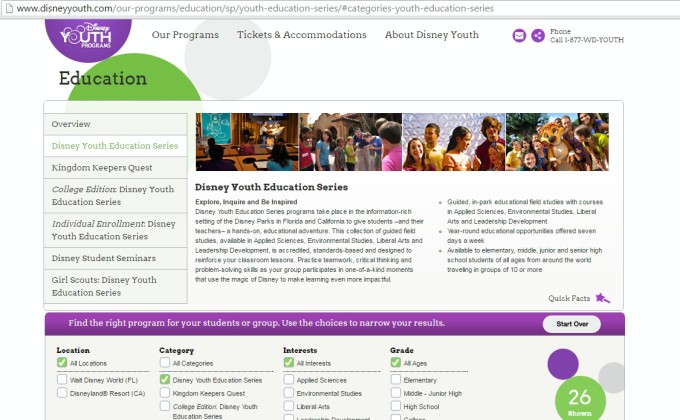
The Empire State Building
Making your way to the top of this New York landmark is exhilarating. To give your kids a better appreciation for the marvel of its architecture and history, check out the Education page provided on the building website. While these are much more structured lessons, there are good ideas for questions to ask and features to point out. I especially love the suggested photojournalism activity that lets kids become on-the-spot reporters. The Empire State Building webpage also a comprehensive list of other places in the city to visit that provide educational background on this magnificent structure. Empire State Building Education Page
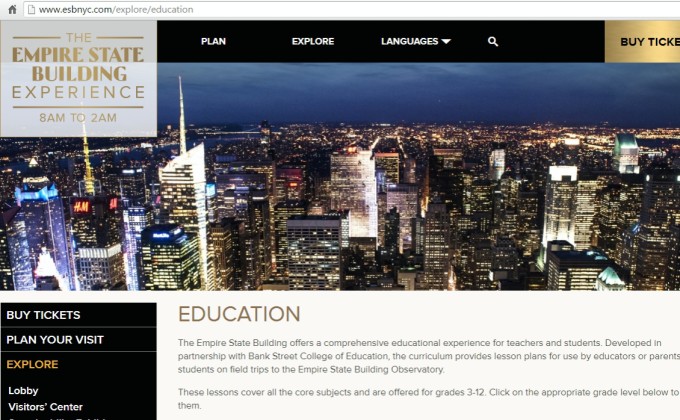
Monterey Bay Aquarium
For any marine biology enthusiasts in the family, an aquarium is the perfect venue to encompass learning into a vacation. The Monterey Bay Aquarium is an exceptional example of what to look for when you’re planning an aquarium visit. Their educational options include printable Ocean Explorer Guides to study, Self-Guided Exploration Guides to complete, and a 199-page printable activity book called the Sea Searchers Handbook. Also be sure to search the “Family Activities” for fun games and scavenger hunts to use while you are there.
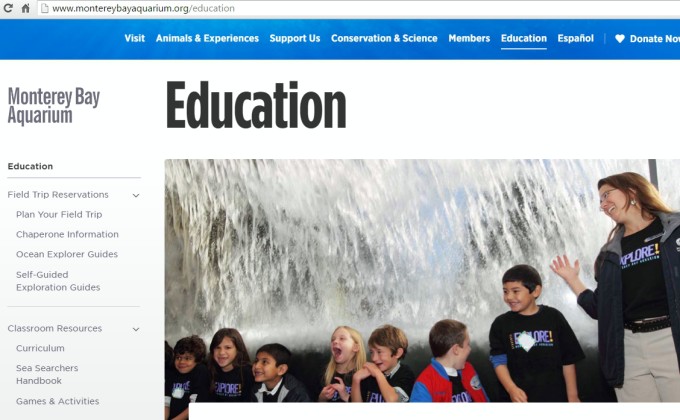
With these four examples as a guide, you can start researching ways to teach the kids while you’re traveling without them even knowing. Sometimes it takes a little creativity, but oftentimes finding information is fairly easy. Places that lend themselves well to this type of activity include zoos, aquariums, museums, and historical attractions, but don’t be afraid to put in a little extra thinking on how to incorporate learning anywhere that you are going. Consider these options when you are searching:
- Does the venue offer classes/seminars/behind-the-scenes exhibits?
- Does the attraction have an Educator page on their website? (If it is not easily noticeable, try a quick Google search of “{Name of Venue} Educators” or “{Name of Venue} Field Trips”.
- If the destination itself does not offer what you are looking for, you can almost always assume that someone else has created something suitable. Searching for “Teacher Materials” or even “Worksheets” for the location will undoubtedly present you with plenty of options to choose from.
Convincing your kids that they want to be learning while traveling can be effortless if you’ve done just a little bit of preparation beforehand. Think out of the box, and the next time you’re visiting a world-famous destination, watch for the class full of children routinely wandering through on just another normal, every-day school excursion.

This is an excellent resource! Of course, having fun while traveling is an objective, but learning while you’re exploring a new place is always a good idea. It exercises your brain and is a great way to gain hands-on knowledge! Nice work! Thanks for sharing!
Great post! Kids should really be involved in these kinds of activities not just to enjoy but to learn many things about people, places, things and even animals.
Your tips about seeking out opportunities that are not as well advertised could be very useful for parents and educators. Your tips about preparation for learning are valid as well.
What a great resource and tip for finding the educational aspect for every destination! As adults, we can appreciate that things we see while exploring have educational value for our kids but it requires a great deal of planning to actually make it education! Starting at places that have information already laid out is a great time saver! I love these resource pages. Sometimes they are for teachers of kids much older than mine and I use them as information for me to write things for my younger children. I’ve been using information like this for 5 years to create travel guides for my own children. Then, I publish them for everyone else to use. No need to recreate the wheel, right?
The world is a classroom and fascinating for kids and adults alike! We love making travel memories. 🙂
We ran into school kids having their field trip to the Zoo in Lima, and the Science Center in Naples. In Lima, the school girls found my girls fascinating because they look so different from Peruvian kids (and weren’t wearing school uniforms). They also kept asking my husband to say their name in English! In Naples, our girls got to join a class that was learning about butterflies, insects and spiders! It was a lot of fun.